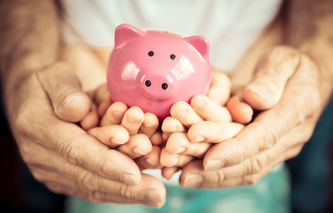It's uncomfortable to be in debt; no one likes the feeling of being out of control, especially when it comes to their personal finances. Individuals in this situation have two problems to solve: getting out of debt, and staying out too. In this article, we're going to start by talking about some of the signals that indicate a problem could be on the horizon. Next, we'll explain some of the habits that help individuals to eliminate debt. Finally, we'll talk about the steps borrowers can take to stay out of debt.
Debt in America
The statistics in America are staggering. As of August 2020, consumers accounted for $4.15 trillion in outstanding revolving and non-revolving credit. This includes credit card balances, smaller loans for cars and boats, as well as personal loans. That's over $12,558 in debt for every man, woman, and child here in the United States; meaning the average family of five owes $62,794.
Danger Signals
Averages can be misleading, and the various levels of family income in the United States imply that what seems like a lot of money to one family can easily be handled by another. The list below provides examples of payment patterns, or conditions, indicating a home's debt might be leading to financial distress:
Continuously sending in monthly payments behind schedule
Making only the minimum payment on credit cards each month
Running up balances on cards because cash is hard to find
"Maxing out" cards, or owning cards that are near their limits
Using savings to pay current bills, or not owning a savings account
Using cash advances from one card to pay the balance on another
Inability to put any money into a savings account each month
Living "paycheck to paycheck"
Postdating checks
Receiving calls or letters from collection agencies
Eliminating Debt
If not controlled, household debt can spiral out of control. Wages can be garnished, a family could be forced into bankruptcy, and even lose their home to foreclosure. In order to eliminate debt, an individual can choose one of two paths. They can start to use more self-discipline, or they can seek the help of a credit counselor. If poor spending habits led to this problem, then both of these paths will be difficult to follow.
Need some inspiration? Read Derek Sall's journey to becoming debt-free and check out the list of a hundred debt-free quotes we put together to inspire our readers for a debt-free 2025.
Income, Expense, and Debt Inventory
Regardless of the path chosen, a good plan to eliminate debt will start with an inventory of sources of income, monthly / daily / weekly expenses and a list of money owed others.
Income: this includes a careful analysis of all sources of household income. Do not include income that is automatically directed to retirement savings plans. This first pass at income should identify money available to pay for expenses each month.
Expenses: this includes a listing of all sources of household expenses. Credit cards and bank statements typically provide a good inventory of monthly expenses. ATM statements should provide good information on the level of cash used each month too.
Debt: this includes mortgage payments, personal and car loans, in addition to money owed on credit cards as well as to companies such as electric and gas utilities, telephone, and cellular carriers. Information should include amounts owed, minimum required monthly payments, interest rates and due dates.
The above information can be used to build a household budget. While it's usually a bad idea to spend money to save money, purchasing a quality software product like Quicken can be very useful for creating a budget. At the very least, using a household budget spreadsheet is a great way to start analyzing the problem.
Analyzing Income, Expenses, and Debt
When the above inventory is complete, it's time to start studying the information. Once again, attack the problem from three angles:
If not controlled, household debt can spiral out of control. Wages can be garnished, a family could be forced into bankruptcy, and even lose their home to foreclosure.Moneyzine Editor
Expenses: look for ways to reduce monthly expenses. The easiest way to start that process is to separate mandatory from discretionary expenses. Mandatory expenses are the "must" pay bills each month. This includes mortgage, car loans, and household costs such as groceries and utility bills. Discretionary expenses are goods and services that make life a bit more enjoyable, but are not essential. This includes lavish vacations, eating at upscale restaurants, and many other forms of entertainment.
Debt: not only is it important to calculate the total amount of money owed others, but it's important to rank, or prioritize, that debt too. Ideally, the balances carrying the highest interest rate should be eliminated first. When deciding which loans to pay off, balance the cost of borrowing (interest rate) with the amount owed. It's personally rewarding to eliminate one creditor's balance, even if it's not the most costly.
Income: a good plan will include an approach from two directions: lowering expenses or expanding income. If it's not possible to eliminate enough expenses to start paying down debt, or if the desire is to expedite the pay-down, then adding to the household's income by working a part-time job or pursuing a side hustle is a viable solution.
Now that an inventory of expenses, debt, and income has been analyzed, it's possible to create a spending plan, or budget, to track the use of the household's income. Creating and maintaining a realistic budget is the only reliable way to begin the process of reducing existing debts.
Process Steps
Once the habits of reducing money owed to others are established, remaining out of debt should be easy. The solutions to these problems are easy to identify:
Expenses need to be less than household income
Reduce all unnecessary costs
If expenses are still more than household income, then increase the money flowing into the home
Financial freedom will not just happen. Without a plan to succeed, the failure rate will be high. In addition to the household budget, the following steps will help to ensure success:
Contact Lenders: explain to creditors the need to work with them to create a realistic repayment plan. They will work out reasonable plans if they are convinced this is the only way they will collect money owed.
Carry Cash: the best way to lower balances owed others is to pay for items using cash, or simply only spend from your checking account. This is the ultimate in taking a disciplined approach to controlling costs.
Pay Bills: track and pay money owed to creditors on time each month. This includes any deferred payment arrangements that have been worked out with lenders.
Credit Counseling: counseling services are provided by organizations to help people with debt problems. It's possible to find local help by calling the National Foundation for Credit Counseling's toll-free number: 1 800-388-2227.
Emergency Fund: once spending is under control, use that same approach to start building an emergency fund. This type of account will prove valuable if a financial hardship strikes. Generally, an emergency fund should equal eight months of household expenses.
Start Saving: after an emergency fund, you should start putting some money into a savings account, or better yet a high-yield savings account to generate some passive income through interest. For inspiration, check how much you can gain in interest on 3 million, 4 million, 20 million, 50 million, 100 million, and 200 million.








.jpg)
.jpg)